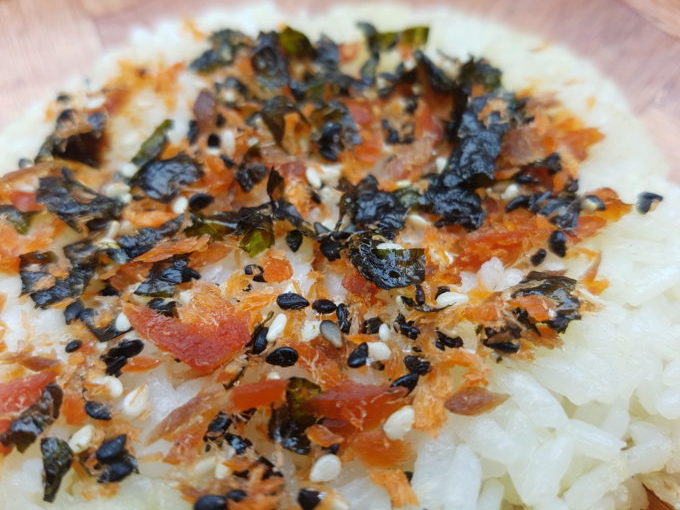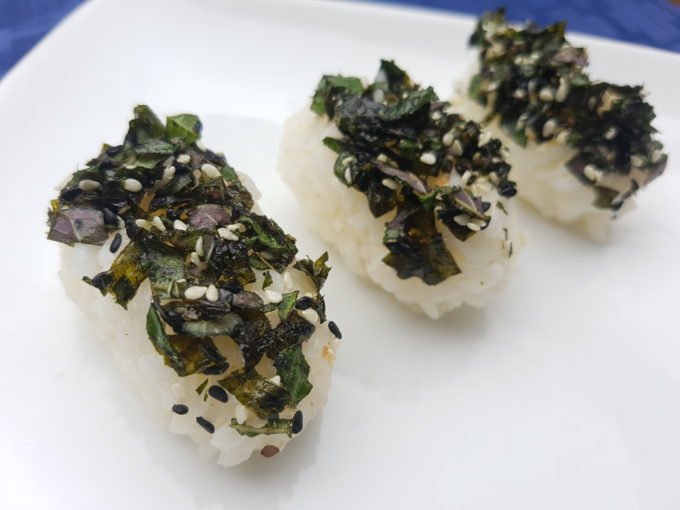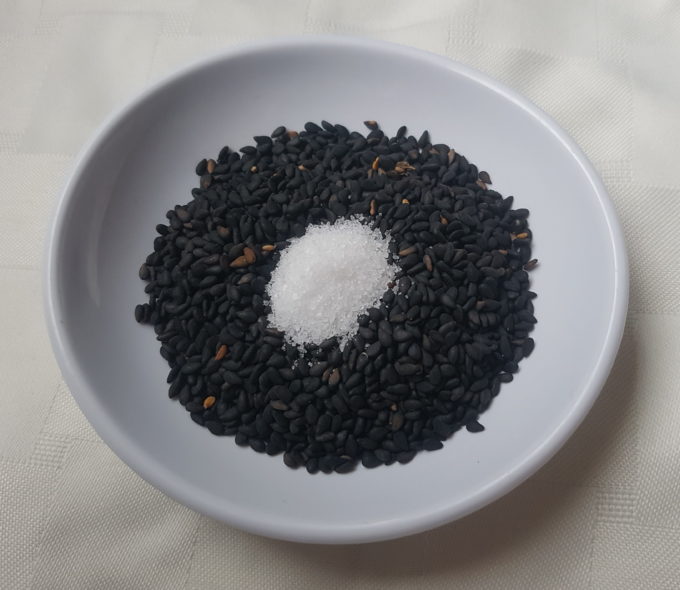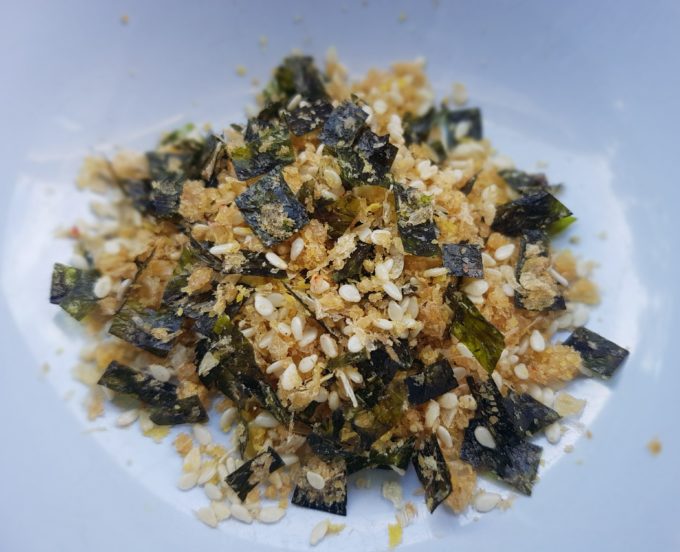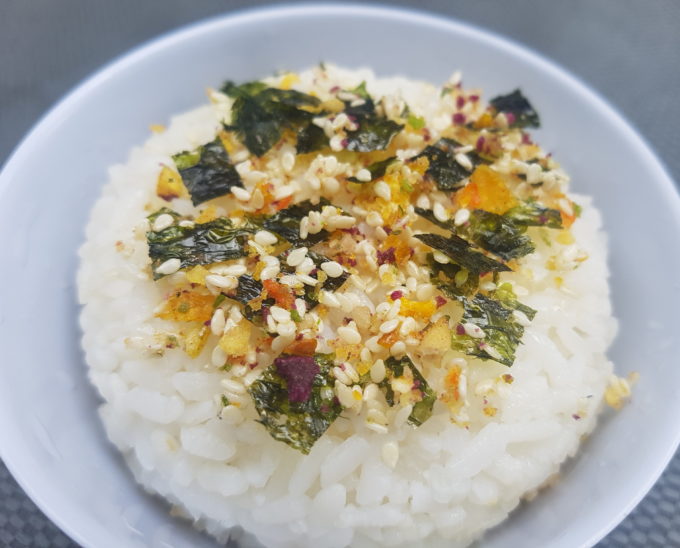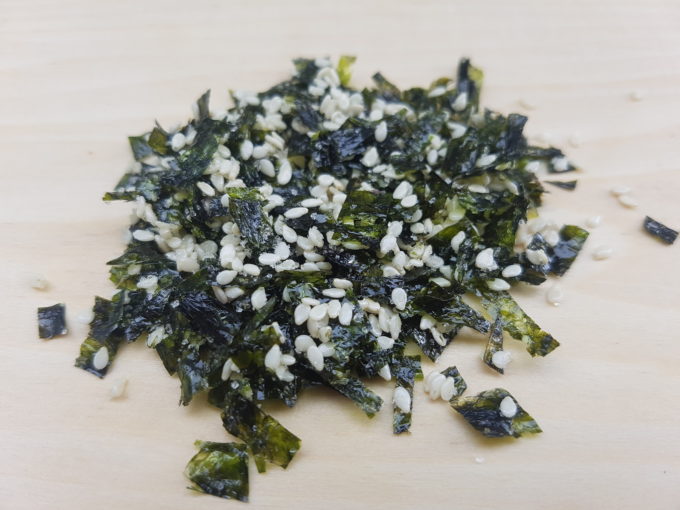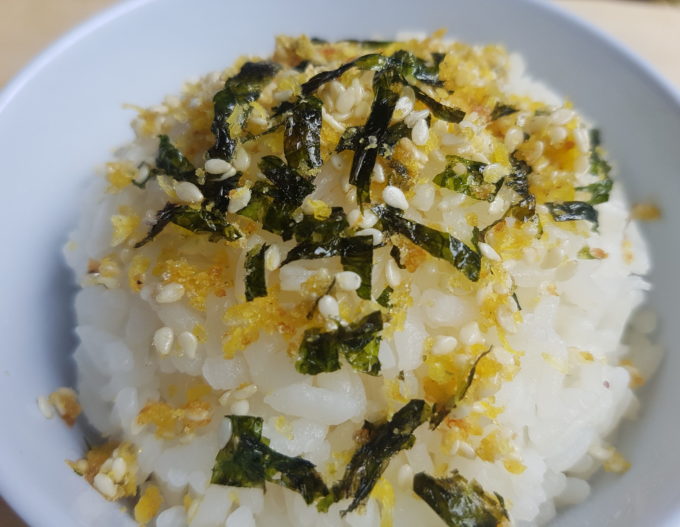Having worked on 6 furikake recipes before this one, I am surely getting the hang of flavors and styles by now. As great as it is to replicate existing ideas, it’s also nice to come up with something your own, as it pertains to your personal preferences and region. That being said, there isn’t much […]
Read moreThere are several names and styles for this kind of furikake. First, shiso, perilla, and beefsteak plant are all the same thing. It is a member of the mint family, with green to dark purple tooth-edged leaves. It has a very strong mint-basil flavor, with definite pepperiness and a bitter undertone. It can also be […]
Read moreThis is the most basic of Furikakes. Simply unhulled sesame seeds and salt. It has been used in Japan for thousands of years over rice, fish, and a multitude of other dishes, but has gained some more recent fame as a lower sodium substitute to straight salt. Using a ratio anywhere from 15:1 to 5:1 […]
Read moreThis Furikake, or rice seasoning containing sesame seeds and salt, is entitled ebi fumi, for shrimp flavor. Both one of the sweeter and crunchier furikake, this recipe is quite easy to make. I always appreciate a home made furikake over store bought. Not only for it’s drastic price difference, but also because there are so many […]
Read moreYasai Fumi Furikake is also known as veggie furikake. As yasai fumi means ‘vegetable flavor,’ it’s a wonderful way to take those otherwise nearly indistinguishable ‘healthfood’ vegetable chips, and turn them into something tasty. Now there are two common varieties of these vegetable snacks. For this recipe I used the vegetable chips, but one could […]
Read moreOne of the things I love about cooking new Asian foods is learning how to translate their names. Nori Komi took me a while to figure out. Not the nori part. That’s really easy; ‘seaweed.’ To be specific it’s a type of seaweed, nori. But the komi part took me a while to track down. […]
Read moreThe base for any furikake is sesame seeds and salt. The name noritama comes from nori, or ‘sea weed,’ and tama, short for tamago, which means ‘egg.’ This ‘sprinkle’ for rice is hugely popular not only in Japan but all over the world. Noritama furikake is easy enough to purchase, even common in many US […]
Read more
